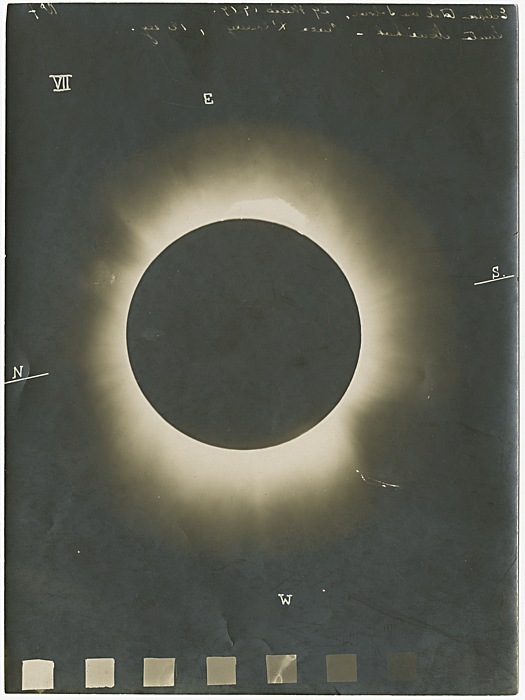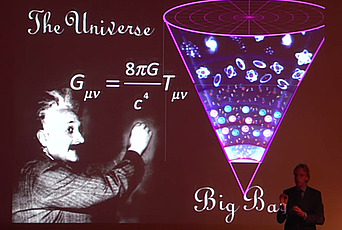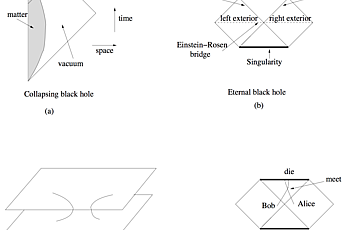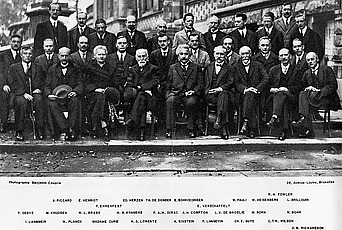General Relativity’s Influence and Mysteries

Albert Einstein finished his general theory of relativity in November 1915, and in the hundred years since, its influence has been profound, dramatically influencing the direction of physics, cosmology, and mathematics. The theory upended Isaac Newton’s model of gravitation as a force of attraction between two masses and instead proposed that gravity is felt as a result of the warping by matter of the universe’s four-dimensional spacetime. His field equations of gravitation explained how matter curves spacetime, how this curvature tells matter how to move, and it gave scientists the mathematical tools to understand how space would evolve in time, leading to a deeper understanding of the universe’s early conditions and development.
“The general theory of relativity is based on profound and elegant principles that connect the physics of motion and mass to the geometry of space and time,” said Robbert Dijkgraaf, Director of the Institute and Leon Levy Professor, who gave a lecture “100 Years of Relativity” in October, sponsored by the Friends of the Institute. “With Einstein’s equations, even the universe itself became an object of study. Only now, after a century of calculations and observations, the full power of this theory has become visible, from black holes and gravitational lenses to the practical use of GPS devices.”
To celebrate the centennial of Einstein’s general theory of relativity, the Institute held a special two-day conference November 5–6, cohosted with Princeton University and made possible with major support from IAS Trustee Eric Schmidt, Executive Chairman of Alphabet Inc., and his wife Wendy. The conference, General Relativity at 100, examined the history and influence of relativity and its continuing impact on cutting-edge research, from cosmology and quantum gravity, to black holes and mathematical relativity.
The celebratory activities began on Wednesday, November 4, with Light Falls, a theatrical production by Brian Greene, Member (1992–93) in the School of Natural Sciences, and closed with a special performance by Joshua Bell and a screening of Einstein’s Light, a documentary film by Nickolas Barris, Director’s Visitor (2013).
It also highlighted the role of Princeton physicists, particularly IAS Members John Wheeler and Robert Henry Dicke and their students, in pushing forward an examination of general relativity, its reach, power, and enduring mysteries. “The first fifty years were very much an effort of Einstein and a handful of people,” said Dijkgraaf. “For the last fifty years, general relativity has blossomed, and physicists and mathematicians both from the Institute and Princeton University have played a crucial role in bringing this theory to full bloom.”
With his general theory, Einstein used mathematics to discover and calculate nature’s laws. To do this, he introduced little-known mathematics, which caught the attention of Princeton University mathematician Oswald Veblen when the theory was published in 1916. Veblen would serve with Einstein as one of the Institute’s first Professors in 1933.
Veblen’s and his Princeton University colleague Luther Eisenhart’s interest in the geometry associated with general relativity—based on the work of two Italian mathematicians, Tullio Levi-Civita and Gregorio Ricci–Curbastro—was one of the reasons that Einstein chose to move from Germany to the Institute rather than another institution, according to IAS Member Albert Tucker, the late former chair of Princeton University’s mathematics department, in an oral history interview about the Princeton mathematics community in the 1930s. “It was an area of research that was scarcely known anywhere. Einstein’s general relativity turned the spotlight on it. Veblen and Eisenhart took it up. With Veblen’s experience with a variety of geometries and Eisenhart’s previous work in differential geometry, they were ideally qualified to lead research in the geometry associated with general relativity . . . I think that it was this kindred feeling that Einstein had for Veblen and Eisenhart that made him willing, in 1933, to come to Princeton to stay.”
Until the Institute’s first building, Fuld Hall, opened in 1939, Einstein’s office and those of his IAS colleagues were located in Fine Hall on Princeton University’s campus. There were two problems that concerned Einstein at the time, according to the late IAS Member Valentine Bargmann, one of Einstein’s assistants.
“One was the problem of motion, the other was unified field theory. The first had been started with Leopold Infeld and Banesh Hoffmann, and it was a question in general relativity,” said Bargmann in his oral history interview about Princeton in the 1930s. “The second was the construction of a unified field theory. It was a major interest, which would occupy Einstein to the end of his life. But the problem of motion had also occupied him for many years and had, in Einstein’s view, not been adequately resolved.”
IAS Member James Wallace Givens described working with Veblen on an elusive goal that they were too modest to speak aloud. “The thing we were trying to do, though we never talked about it in this language—Veblen would have dismissed it as being too majestic—was to get a mathematical foundation for relativity, which would unite it with quantum theory,” said the late Givens in his oral history interview. “We never spoke of unified field theory. We did not want to be guilty of Iese majesty!”
During his time at the Institute, where he worked until his death in 1955, Einstein was consumed with constructing a unified field theory that would present a single framework for all the known forces of physics—believing that all of nature must be described by a single theory. Having introduced what is now known as quantum physics in 1905—his theory of special relativity brought forth the odd idea that light could behave both as a particle and a wave—Einstein was resistant to accept that general relativity describes gravity and the world at large, and quantum mechanics, which does not account for gravity, describes atoms and particle physics. He worked on a unified field theory until his last days, even though the goal of unifying the four fundamental forces of nature—gravity, electromagnetism, the strong nuclear force, and the weak nuclear force—had been set aside by the majority of working physicists.
In the 1930s and 1940s, only a handful of mathematicians and physicists in Princeton were working on general relativity. “By ’58 when I arrived here as a graduate student, the general feeling was that general relativity was an elegant theory but of very limited interest. The big actors then were particle physics and quantum physics. Condensed matter was starting to heat up, but general relativity? Eh, a dead end,” said IAS Member Jim Peebles, Princeton University’s Albert Einstein Professor of Science, Emeritus. As part of General Relativity at 100, Peebles organized a dinner program with Dieter Brill, Jim Faller, Bill Hoffmann, Sidney Liebes, Charles Misner, and Rai Weiss, who were among Wheeler’s and Dicke’s students.
Since then, the theory has been used to discern the composition and evolution of the universe. As Dijkgraaf writes in “Without Albert Einstein, We’d All Be Lost” in the Wall Street Journal,
The past decade has brought a new cascade of discoveries. The most important is that we now know precisely what we don’t know. Einstein’s theory allows us to measure the weight of the universe and thereby its energy content. This has been a shocker. All known forms of matter and energy—that is, all the particles and radiation that make up us, the Earth, the sun, all planets, stars, and intergalactic clouds—comprise just 4 percent of the grand total. The remaining 96 percent is made of unknown forms of “dark matter” and an even more mysterious “dark energy,” which permeates all of space and drives the universe to expand faster and faster. These days there is a lot of talk about the 1 percent of society, but from a cosmic point of view, we are all part of just 4 percent of the cosmos.
Today, a unified field theory is a central goal of physicists, and string theory has become the favored candidate to provide a framework for a unified understanding of the basic laws of the physical universe. At the Institute, some of the world’s foremost string theorists and cosmologists continue to interpret and test Einstein’s theory of general relativity, about which questions persist: What is the physics of black holes? Do space and time emerge from a more fundamental description? Why is the universe accelerating? How can general relativity be reconciled with quantum mechanics? What are the origins and the long-term fate of the universe? General relativity set us on a course of understanding that we are still trying to fully grasp.
Recommended viewing and reading:
Videos of talks from the General Relativity at 100
conference: www.ias.edu/ideas/2015/general-relativity-at-100-conference
“Without Albert Einstein, We’d All Be Lost” by
Robbert Dijkgraaf, Wall Street Journal, November 5, 2015: ow.ly/UjiYu
“100 Years of General Relativity,” a lecture by
Robbert Dijkgraaf, October 14, 2015: www.ias.edu/2015/dijkgraaf-relativity
“Mathphilic” by Rebecca Mead, New Yorker,
November 30, 2015: www.newyorker.com/magazine/2015/11/30/mathphilic
“A Century Ago, Einstein’s Theory of Relativity
Changed Everything” by Dennis Overbye, New York Times,
November 24, 2015: nyti.ms/1XoaMLq
The Princeton Mathematics Community in the
1930s: An Oral History Project: www.princeton.edu/mudd/finding_aids/mathoral/pm03.htm


